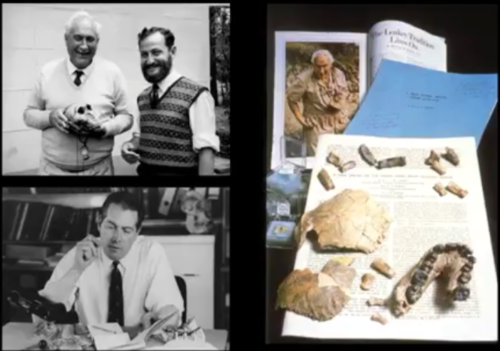
As we approach the end of the Human Evolution course, students have been learning about the evolution of our own genus Homo. They have come to find out that climatic changes that happened about 3-2.5 mya seem to coincide with the evolutionary changes of our ancestors. We learn that the environmental shift from wooded areas to open grasslands and savanna may have forced our ancestors to develop the morphological and ecological capabilities as seen in Homo. We can, therefore, link our evolutionary trajectories to the environmental opportunities and aptitudes of hominins at that time. This is a period in history when the Australopithecines disappear, and the members of our genus Homo appear. We see a trend in morphological development, especially in the cranium, with Homo habilis showing up at Olduvai Gorge with a much bigger brain of about 510cc, and with technological advancements demonstrated in the associated stone tools. Subsequent finds of Homo habilis have been found at Koobi Fora, Kenya; Hadar-Ethiopia; and the Swartkrans cave in South Africa. Another Homo species, rudolfensis, found at Koobi Fora, is believed to have co-existed with the Homo habilis in the same geographical range and time period.
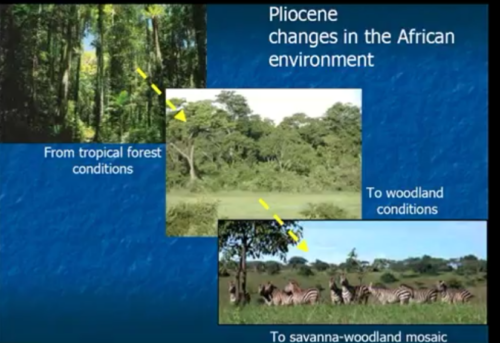
Environmental changes in the Late Pliocene period.
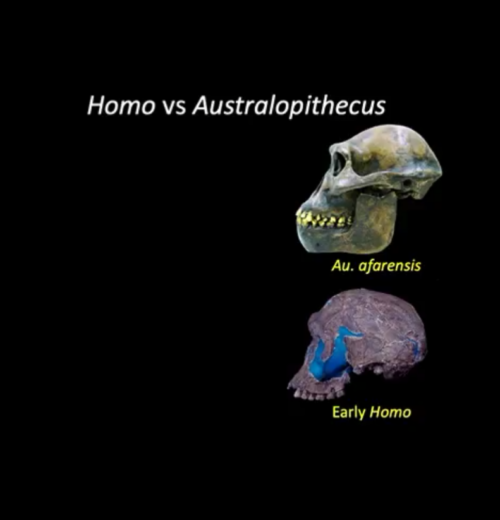
Morphological differences in the size and shape of the skull between Homo and Australopithecus.
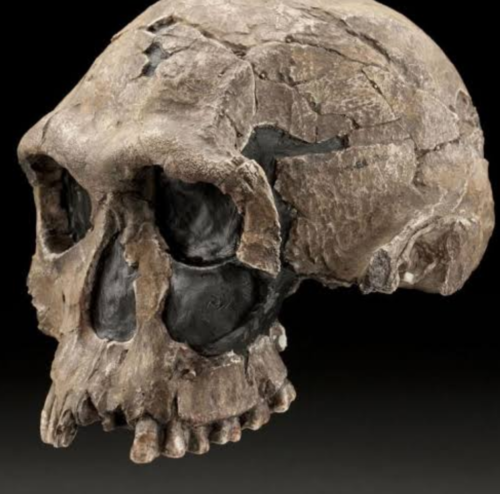
A cast of the Homo habilis skull.
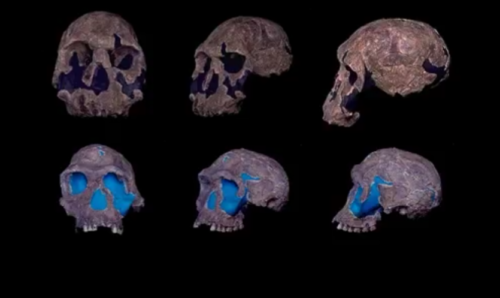
Homo rudolfensis and Homo habilis skulls
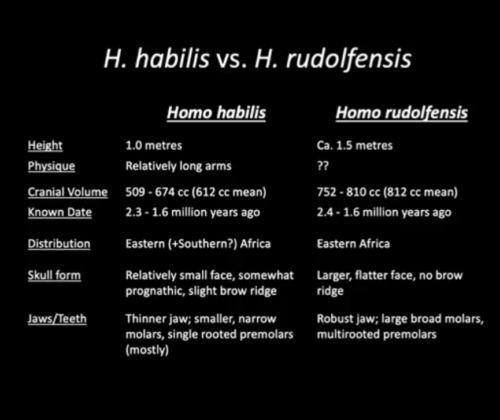
Notable differences between H. habilis and H. rudolfensis.
Dr. Carrie Mongle described the appearance of early African Homo erectus (Homo ergaster) as one of the crucial phases in reconstructing our phylogenetic tree. Paleoanthropologists have always found it hard naming and grouping specimens according to morphological similarities and differences. Students spent a lot of time identifying the morphological changes from early Homo to later Homo. As part of their final projects, Dr. Mongle assigned some topics to the students from the time Homo erectus left Africa to the appearance of anatomically modern humans. So far, Emma and Zac have already presented their topics, and Amber will be presenting soon as we wrap up the course.
Stay tuned as the students learn more about stone tools and cultures of our ancestors in the Archaeology module.





